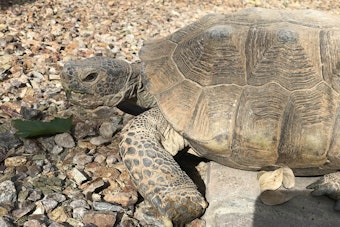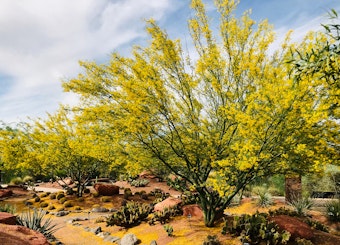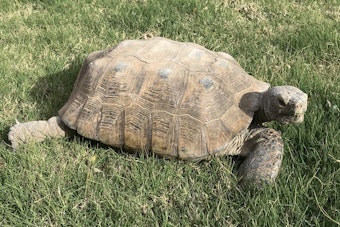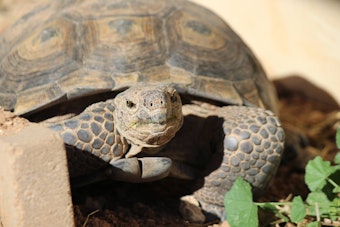 Be Inspired Blog - Arizona
Be Inspired Blog - Arizona

How To Support Our Threatened Desert Tortoise
Caring for the Desert Tortoise: A Guide to Conservation and Adoption
About Desert Tortoises
Desert tortoises are remarkable creatures native to the southwestern United States, including Arizona. They are well-adapted to the harsh desert environment but face threats from habitat loss, disease, and the impacts of human activities. Here's what you need to know about desert tortoises and how you can help protect and care for them.
Understanding Desert Tortoises
The desert tortoise, which includes both the Sonoran and Mojave species, is known for its high-domed shell and elephantine legs. These tortoises are herbivores, relying on a diet of native plants and grasses. They are ectothermic, regulating their body temperature through behavioral means such as using burrows to escape the extreme desert temperatures.
Threats to Their Survival
Desert tortoises face several threats including habitat destruction due to urbanization, disease, and predation. One significant health threat is the Upper Respiratory Tract Disease (URTD), which is particularly dangerous and can be spread by contact with infected tortoises. It's crucial that captive tortoises are not released into the wild, as this can spread URTD and other diseases to the native populations.
How You Can Help
-
Adopting a Desert Tortoise: The Arizona Game and Fish Department (AZGFD) runs an adoption program for captive desert tortoises that cannot be released into the wild. Adopters are required to provide a suitable outdoor enclosure, including a burrow, to mimic the tortoise's natural habitat. This program helps prevent the spread of diseases by keeping captive tortoises in controlled environments.
-
Creating a Suitable Habitat: If you adopt a tortoise, it's important to prepare your yard to meet their needs. This includes building a burrow and an enclosure that protects them from predators and extreme weather. Prospective adopters must submit photos of their prepared habitat with their application.
-
Long-term Commitment: Desert tortoises can live for 50 to 80 years, so adopting one is a long-term commitment. It's important to have a succession plan in place as these tortoises may outlive their initial caretakers.
-
Volunteering and Education: The AZGFD offers opportunities for volunteering and education to help protect desert tortoises and other wildlife. By participating, you can help with conservation efforts and learn more about how to coexist with Arizona's diverse wildlife.
-
Reporting Sightings: If you encounter a wild desert tortoise, it's important to leave it undisturbed. If you find a sick or injured tortoise, contact the AZGFD (at 844-896-5730) or a local wildlife rehabilitator who can provide the necessary care.
Adopting and caring for a desert tortoise offers a unique opportunity to contribute to wildlife conservation and enjoy observing one of Arizona's native species. If you're interested in learning more or want to apply for adoption, visit the Arizona Game and Fish Department's website for detailed information and resources.
AZGFD Tortoise Adoption Program
By taking these steps, you can play a vital role in conserving the desert tortoise and ensuring that future generations will also be able to appreciate this fascinating species.
Plants that are Beneficial to Desert Tortoises
Whether you decide to adopt a desert tortoise or not, you can still offer desert tortoises crucial support in their natural habitat by planting native vegetation that can provide both food and shelter.
Some of the Top Plants Beneficial for Desert Tortoises Include:
-
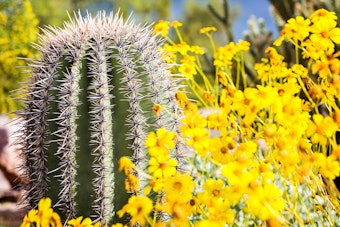 Saguaro Cactus (Carnegiea gigantea) - Provides nectar, pollen, and fruit, serving as a food source for many desert animals and insects. It's a keystone species in the Sonoran desert.
Saguaro Cactus (Carnegiea gigantea) - Provides nectar, pollen, and fruit, serving as a food source for many desert animals and insects. It's a keystone species in the Sonoran desert. -
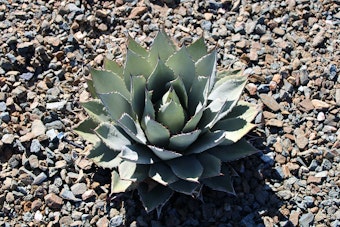 Agave Species - Such as Tonto Basin agave or Rick's Agave (Agave delamateri), Hohokam agave or Murphey's Agave (Agave murpheyi), and Page Springs agave or Yavapai Agave (Agave yavapaiensis), which are important for their nectar that supports local wildlife including nectarivorous bats.
Agave Species - Such as Tonto Basin agave or Rick's Agave (Agave delamateri), Hohokam agave or Murphey's Agave (Agave murpheyi), and Page Springs agave or Yavapai Agave (Agave yavapaiensis), which are important for their nectar that supports local wildlife including nectarivorous bats. -
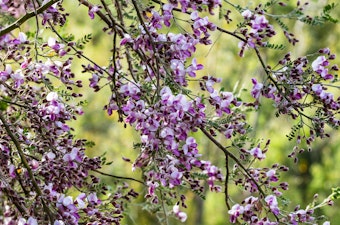 Ironwood (Olneya tesota) - Known for providing substantial shade and serving as a crucial habitat component for various desert wildlife.
Ironwood (Olneya tesota) - Known for providing substantial shade and serving as a crucial habitat component for various desert wildlife. -
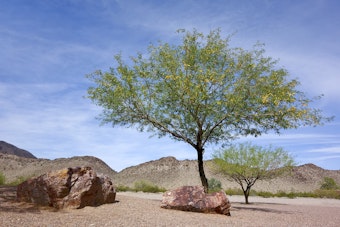 Mesquite (Prosopis spp.) - Acts as an important food source through its pods and provides shelter with its dense foliage.
Mesquite (Prosopis spp.) - Acts as an important food source through its pods and provides shelter with its dense foliage. -
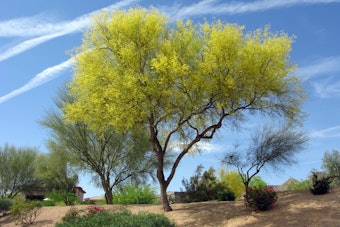 Palo Verde (Parkinsonia spp.) - This tree offers substantial cover and produces flowers and seeds that are consumed by a variety of desert animals.
Palo Verde (Parkinsonia spp.) - This tree offers substantial cover and produces flowers and seeds that are consumed by a variety of desert animals. -
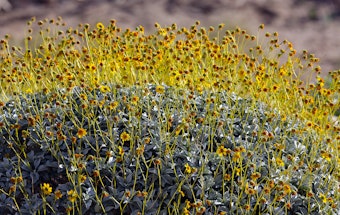 Brittlebush (Encelia farinosa) and Creosote Bush (Larrea tridentata) - These shrubs are significant for their role in providing shelter and are common in desert landscapes.
Brittlebush (Encelia farinosa) and Creosote Bush (Larrea tridentata) - These shrubs are significant for their role in providing shelter and are common in desert landscapes.
These plants not only support desert tortoises by providing essential food and shelter but also help maintain the ecological balance by supporting other wildlife species that share the habitat. Planting these native species can enhance biodiversity and contribute to the health of the desert ecosystem, supporting not only the tortoises but a variety of wildlife species.
For those looking to support or recreate a habitat suitable for desert tortoises, focusing on these native plants can make a significant impact. Native plant types include trees, cacti, grasses, vines, shrubs, and wildflowers. Click the button below for a downloadable brochure of these native plants from AZGFD.
AZGFD Native Plants for Desert Tortoises
Let SummerWinds Help Plan Your Native Plants Garden for Wildlife
Whether planting for tortoises, birds, pollinators or other area wildlife, let the gardening experts at SummerWinds help you find the right plants for your desert garden and landscape. From native plants to water features and habitats, we're here to help you attract and support whatever wildlife you want hanging around in your yard.

